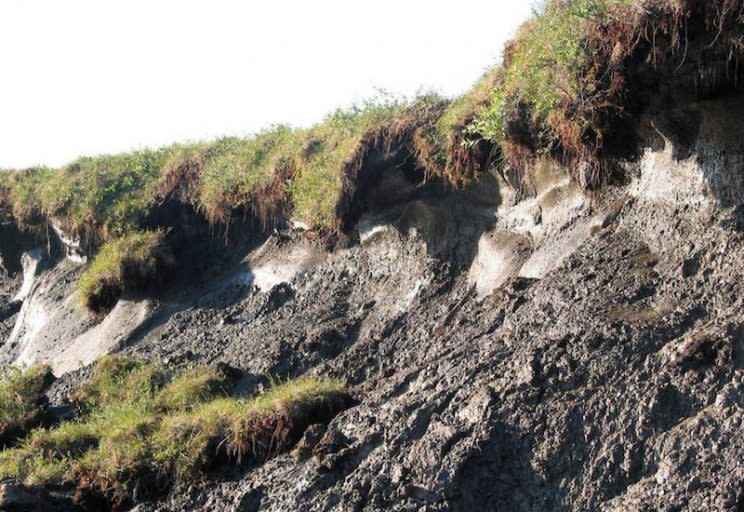Canada's melting permafrost could accelerate global warming, study suggests

Ancient ice that makes up a vast part of Canada’s geography is rapidly melting and the result is an increase in landslides along with the release of previously trapped greenhouse gasses into the air.
In a study called Climate-driven thaw of permafrost preserved glacial landscapes, northwestern Canada, which was published in Geology last month, scientists describe a global trend of warming Arctic permafrost that they claim is warming at twice the rate of the rest of the world.
The melting is especially concerning for the northwest region of Canada, where permafrost decay is affecting an area the size of Alabama, according to Inside Climate News.
Researchers with the Northwest Territories Geological Survey used satellite images and other data to study the Canadian Laurentide Ice Sheet, which covered two-thirds of North America during the last ice age some 14,000 years ago. Recent images show massive swaths of decay 60 to 100 kilometres (40 to 60 miles) wide.
The mapping project’s lead scientist, Steven V. Kokelj, admitted he’s not surprised by the findings.
“Things have really taken off. Climate warming is now making that happen. It’s exactly what we should expect with climate change,” Kokelj told Inside Climate News.
“And the maps that we produced clearly indicated it’s not just a random pattern. We’re sort of connecting dots here for the scientific community.”
The thawing of ice that is thousands of years old releases greenhouse gasses trapped within it, such as methane, which could cause an accelerated global warming.
And as the ice melts, shifting landscapes stimulate landslides, which cause carbon-rich mud and silt to enter waterways.
The resulting changes can have a lasting effect on ecosystems. University of Alberta scientist Suzanne Tank told Inside Climate News the increase of mud and dirt can literally choke off plant life and potentially effect the food chain as a whole.
Canada’s northwest is not alone in the meltdown. All across the Arctic, scientists are seeing similar large scale decay of permafrost, from Alaska to Siberia to Scandinavia. And the changes are not just visible on satellite images.
People of the Arctic are being profoundly impacted by warming temperatures. According to the U.S. National Institute of Health’s Arctic Health website, the lake trout population has diminished while caribou mating and migration has been disrupted, causing great insecurity for Indigenous populations who subsist and rely on these resources.


